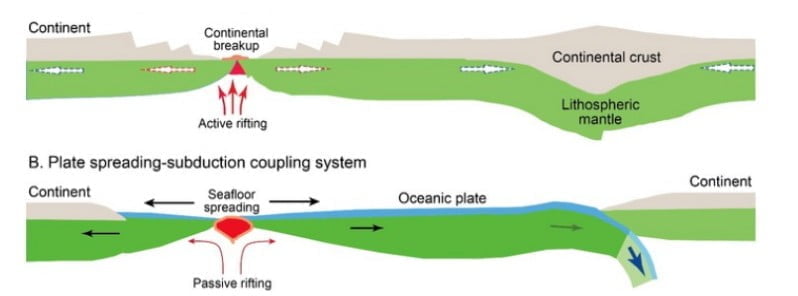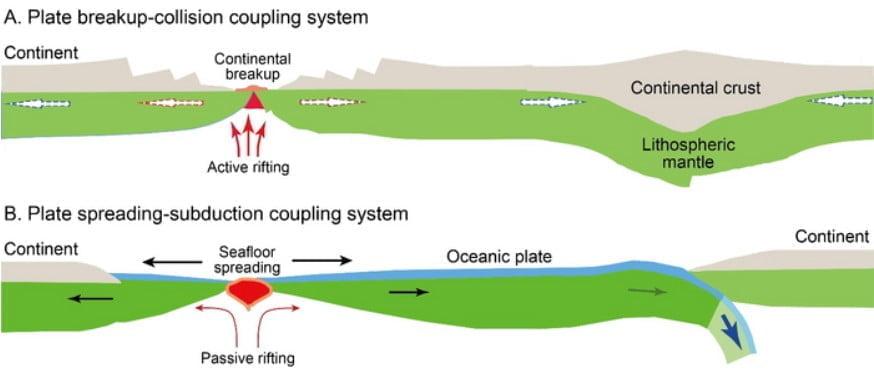New study reveals advanced understanding of plate tectonics

A new study has advanced the understanding of plate tectonics by focusing on the basic principles and geological corollaries along active and fossil plate margins.
- The study provides new insights into the spatiotemporal relationships between material movement, energy transfer, dynamic regime, and geothermal gradient along plate margins
- It highlights the importance of plate divergent-convergent coupling systems in the operation of plate tectonics on Earth and the key to advance plate tectonics is recognizing their geodynamic mechanisms and tectonic effects on the formation and evolution of plate margins
The study found that plate tectonics operates through the interlinked processes of continental drift, seafloor spreading, and lithospheric subduction, resulting in the generation, modification, and demise of lithospheres throughout geological time.
The system of lithospheric plates in horizontal and vertical movements forms the spatiotemporal linkages of matter and energy between the surface and interior of the Earth, advancing the kinematic theory with a dynamic explanation.
Prof. Yong-Fei Zheng at the University of Science and Technology of China, the author of the new study, highlights the importance of plate divergent-convergent coupling systems in the operation of plate tectonics on Earth.
These coupling systems are categorized into two types: one is the lithospheric breakup-collision due to active rifting, with the push effect of lithospheric breakup on collisional thickening and shallow subduction to smaller depths; the other is the seafloor spreading-lithospheric subduction due to passive rifting, with the pull effect of subducting oceanic slab on deep subduction to greater depths.

B. The seafloor spreading-lithospheric subduction coupling system, in which the oceanic slab is subducted to depths of >80 – 100 km (>50 – 62 miles) for the gravitational pull, providing far-field stresses for passive rifting.
Image credit: Science China Press
The study also found that matter and energy transfers at plate margins proceed in bottom-up and top-down ways, respectively. They correspond to changes of not only the dynamic regime from extension to compression and from compression to extension but also their thermal state from hot to warm and from cold to warm.
This research provides new insights not only into many first-order problems regarding tectonic occurrences in continental regions but also into the origin of hotspot magmatism in relation to the mantle plume hypothesis.
The recognition of the geodynamic mechanisms and tectonic effects on the formation and evolution of plate margins is the key to advance plate tectonics.
References:
Plate tectonics in the twenty-first century – Science China Earth Sciences – Zheng Y.F. – 2023 – https://doi.org/10.1007/s11430-022-1011-9
Featured image credit: Science China Press

Commenting rules and guidelines
We value the thoughts and opinions of our readers and welcome healthy discussions on our website. In order to maintain a respectful and positive community, we ask that all commenters follow these rules.